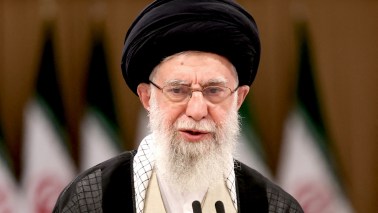Vladimir Putin has hit back against Ukraine’s ‘Spiderweb’ operation, which recently destroyed or damaged at least two dozen Russian bombers. Overnight, Russia fired 45 missiles and more than 400 drones at Ukrainian cities and apartment blocks. At least six people were killed, including three rescuers searching for survivors in Kyiv. More than a hundred civilians were injured across the country. Putin’s spokesman, Dmitry Peskov, claimed the mass attack on ‘military targets’ was a response to the ‘terrorist acts of the Kyiv regime’. But Ukraine is far from done; the Kerch bridge, which links the occupied Crimea to the Russian mainland, is high on the hit list.
This week, the Ukrainian secret service, the SBU, once again targeted the Kerch bridge
This week, the Ukrainian secret service, the SBU, once again targeted the Kerch bridge. Ukrainian agents, most likely using a ‘Marichka’ underwater drone, detonated explosives planted on the bridge’s underwater supports. More homemade sea drones then attempted to breach the Russian defensive structures, trying to clear a path to reach the bridge itself. The sea battle raged for nearly three hours, but the bridge turned out to have better defences than Russia’s airfields. For now, it remains standing.
Ukraine has made at least three attempts to take it down. In October 2022, a truck exploded on the bridge a day after Putin’s 70th birthday. In July 2023, after several months of intensive repair works, the bridge was hit again, this time by naval drones. This latest attack came from underwater. Lieutenant General Vasyl Maliuk, head of the SBU, claimed the bridge is now in ‘critical condition’ after the underwater explosion ‘severely damaged’ its support base. ‘God loves the Trinity,’ he said, ‘and the SBU always brings what it has conceived to the end and never repeats itself.’ Russia denied there was any significant damage. It quickly reopened passenger traffic after the attack ended.
The 12-mile bridge holds both symbolic and strategic significance for Putin. Its rapid construction, at the cost of £3 billion, sealed Russia’s occupation of Crimea in 2018. The Russian president attended its opening in person, driving a KAMAZ truck at the head of a convoy of lorries. The bridge served as a vital supply route for the Russian military during the full-scale invasion of Ukraine. The Kremlin did everything to protect it, amassing anti-aircraft systems, smoke generators, radar reflecting barges, floating booms and nets and warships; but the constant Ukrainian strikes forced Russian troops to rely on supply routes via the occupied Luhansk and Donetsk regions instead.
Since then, Crimea has become a graveyard for Russian air defences, with more systems pulled from the front to protect Putin’s precious bridge. That’s exactly why Ukraine must keep targeting it. With Moscow’s eye fixed on the peninsula, more operations like ‘Spiderweb’ can succeed deep inside Russia. After all, Putin will continue massacring Ukrainian civilians no matter what Kyiv does – whether it strikes Russian bombers and oil refineries or not. With Russian advances gathering pace on the front line, Ukraine’s secret services are the country’s best shot to turn the tables in this war.








Comments